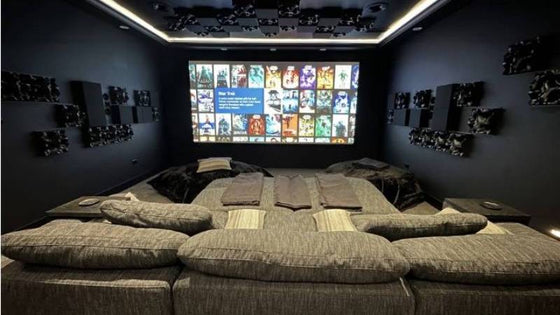Creating a system you love shouldn't be difficult. The Acoustic Frontiers blog is here to help.

This article explains how to interpret T60 and other variants of mid and high frequency decay / reverberation time measurements in the context of small rooms like home theaters, listening rooms and recording studios. Note that a lot of things written about T60, both online and in text books, are written in respect to acoustically large rooms such as concert halls.

We are looking for decay times that are like Goldilocks oatmeal preferences - 'just right'. Decay times that either too long, too short or are notably different to the decay times in other frequency bands all cause audible sound quality degradations: Too long - overly long decay times, even when obvious echoes cannot be detected, results in a loss of low level detail in much the same way as a room with a high noise floor. This is because low level sounds within the music are obscured by the slow decay of other louder sounds. This phenomenon is also known as masking and can be employed for good in noise nuisance reduction systems. Slow decay times consequently reduce the ability of a system to reproduce critical acoustic cues such as the decay character of a recording venue or the precise location of a musician within the soundstage. A room with long decay times also tends to sound harsh and brittle and can be an unpleasant place to listen resulting in rapid fatigue. Overly long decay times are considered those over 0.5s.

This room is too live, with a T60 of 0.9s. Vertical scale is 0 to 2 seconds
Too short - short decay times can result in a lack of spaciousness and envelopment. Overly short decay times are considered those under 0.2s. Like most things in acoustics, however, things are not simple. Two rooms with identical single figure reverberation times can sound quite different depending on where the absorption is located. For example our showroom home theater has very little mid/high frequency absorption on the lateral surfaces but a lot on the ceiling and floor. That room will sound different to a room with a lot of absorption on the side walls and not much on the ceiling or floor.

Excessively low reverberation time (around 0.15s) - vertical scale 0 to 1 second.
Vary significantly across frequency bands - a room that exhibits uneven decay characteristics, where the sound decays much faster at some frequencies than others can at worst sound noticeably unbalanced with a ‘dull’ treble or ‘bloated’ bass. Uneven decay is most often caused by furnishings within the room such as thin drapes and carpets that absorb significantly more energy at treble frequencies (above around 1kHz) than they do at midrange frequencies. Our target here is for T20 and T30 to be within +/-25% across the frequency range from 250Hz to 4kHz.

Unbalanced reverberation time - vertical scale 0 to 1 second.
Learn how early home theater design, layout, and acoustic treatment improve performance in new home construction.
This media room was intentionally designed to feel like part of the home—not a separate, tech-heavy space. Through careful acoustic planning, equipment integration, and final calibration, we achieved a room that is both beautiful to live in and immersive to experience.
"No other subwoofer system I’ve owned even comes close to what this room delivers. Reaching out to Acoustic Frontiers was one of the best decisions I’ve made—I highly recommend working with them if you want to get the most out of your theater."

Nyal Mellor, Founder, Acoustic Frontiers



Nyal Mellor
Author